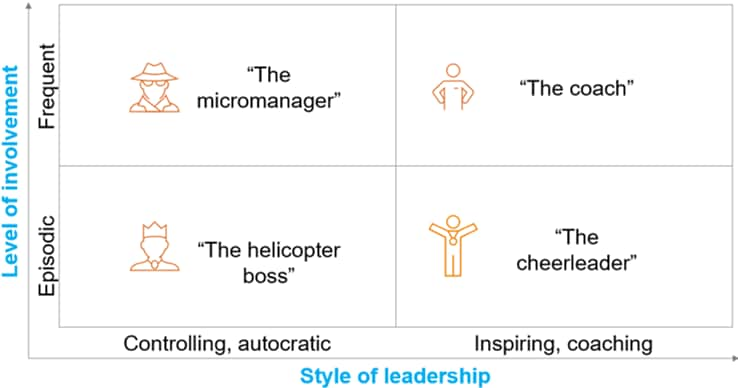Barbara is a BU leader overwhelmed by the amount of time she spends making decisions: hiring decisions for managers several levels below her, signoffs on small business expenses and minor changes to operating procedures. She never has time to think about strategic decisions.
Barbara decided to be more adamant about delegating decisions to her direct reports. Within days, problems arose, and she thought some of the decisions made were not good ones. Sticking to her guns, she did not take back the decisions, but gave clear feedback and held them accountable. But she realized many decisions still waited for her informal endorsement, so they weren’t necessarily moving faster, even in the cases where people made the right decisions without her. Her team continuously found creative ways to ask her to make the decision. As meetings and committees piled up, particularly one-on-one “check-ins” she realized she was being tested by her team for what the ‘right’ decision was. Her goal of more accountability and faster decisions seemed to be going in the wrong direction, despite her best attempts to empower people.
For leaders or organizations trying to drive more empowerment, this is a common story. Another common pitfall Barbara might have experienced is believing that empowerment is “leaving them alone” and hoping her employees rise to the occasion because they cannot lean on her. Barbara at least made attempts to engage and coach her employees, though she was still unsuccessful, this was a step in the right direction. In a shift from less to more empowerment, this pitfall can be even more disastrous than the first if real problems arise and the “empowering” leaders maintain a hands-off “leave them alone” approach.
The basic problem is a fundamental misunderstanding of what empowerment means, and what it requires of leaders. Many managers think delegating to others and empowering them means leaving them alone to make decisions; but successful empowerment requires involvement, it means being hands on, just not directive – playing the role of inspiring coach and servant leader (see Exhibit 1) and providing guidance and guardrails, but not making the decision. This looks very different from “laissez faire” hands-off leadership styles. Our research shows organizations whose leaders successfully empower others through coaching are nearly four times more likely to make fast, good decisions and outperform their industry peers.

Many managers go on a journey in their management styles attempting to find the best way to empower their employees. They often start out as either a helicopter boss or micromanager. They are hands-on and controlling and overrule an employee’s decision if they don’t like it. But, these two archetypes do differ in their tolerance for failure. Helicopter bosses tend to manage by exception, maintaining a distance and being mostly hands-off until an employee “fails” or creates cause for concern. They take over to get things back on track, bark out orders, exert pressure and control, and once things are stable, go back to being hands-off. Micromanagers seek to stave off failure by being highly involved and controlling most or all of the time. While each might have its place, for instance, in times of crisis when the employee lacks either the will or the skill to adequately do what is required, neither approach is very empowering.
For leaders with a more controlling, autocratic style, it often seems that they show their “trust” and “empowerment” by being less involved, which leads to the misconception that empowerment means being hands-off. In fact, we’ve seen many leaders and employees express their beliefs that the shift to being more empowering requires moving from the “micromanager” to the “cheerleader,” becoming much more hands-off, but episodically swooping in to tell people how great they are.
In our next blog post, we’ll share how leaders can coach and mentor employees – and the actions managers can take to truly empower those they manage.


